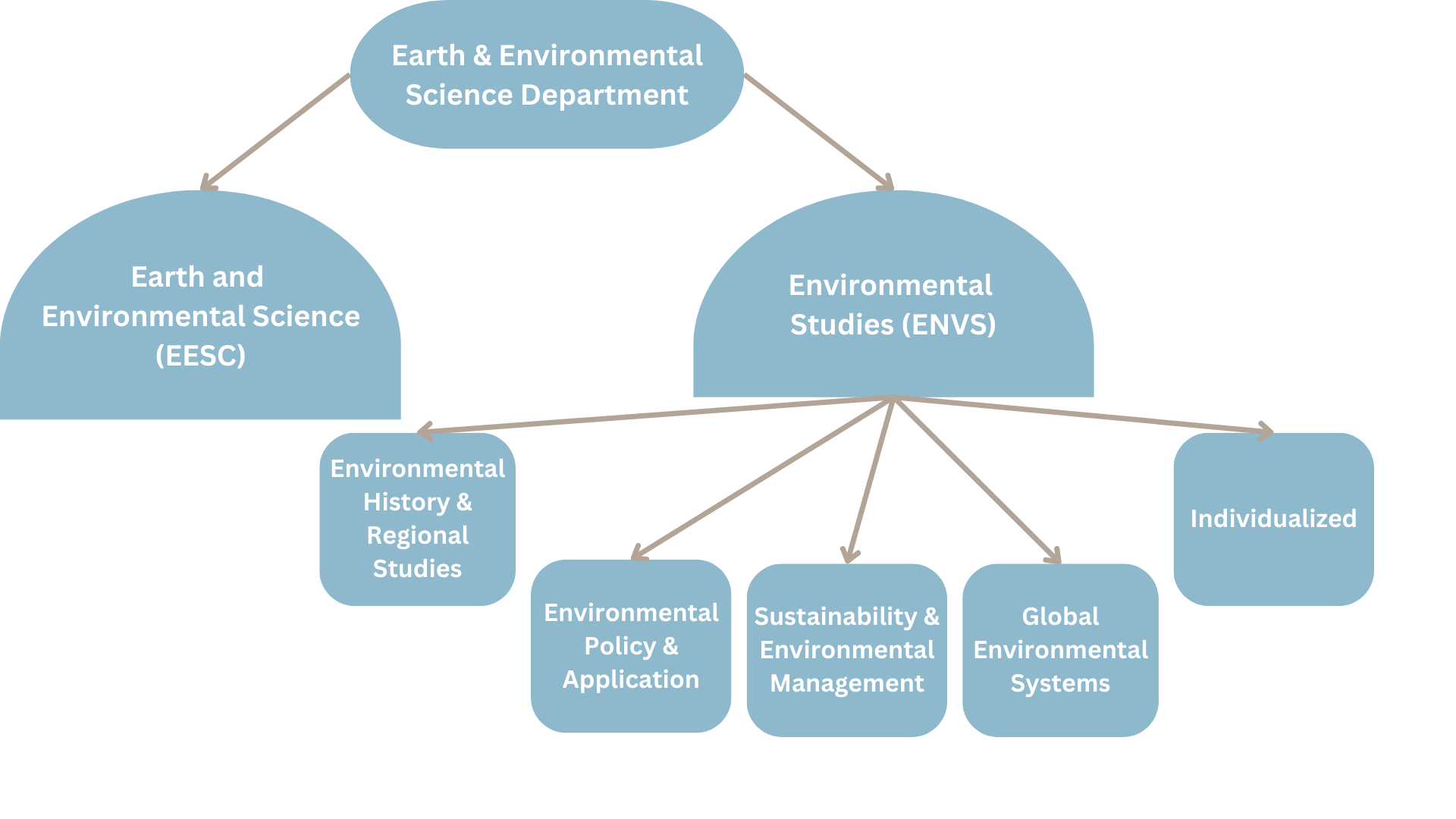
Students in the Environmental History and Regional Studies concentration learn a temporal and spatial perspective to the study of the Environment. The concentration/major is made up 15 credits from several groups of courses outlined below.
(Minimum 15 credits for Major / 35 credits total)
Required Courses (8 CUs)
ENVS 100 / ENVS 1000: Introduction to Environmental Science (1 CU)
GEOL 204 / EESC 2300: Global Climate Change (1 CU), OR
GEOL 100 / EESC 1000: Earth System Science (1 CU), OR
GEOL 103 / EESC 1060: Natural Disturbances and Disasters (1 CU), OR
GEOL 130 / EESC 1030: Oceanography (1 CU)
ENVS 301 / ENVS 3100: Environmental Case Studies (1 CU), OR
ENVS 302 / ENVS 3103: PGS – Case Studies in Environmental Sustainability (1 CU), OR
ENVS 400 / ENVS 3991: Environmental Studies Seminar (1 CU)
ENVS 4997 a & ENVS 4997 b Senior Thesis (two courses, 1 CU each)
Data Analysis and Statistics (1 CU) from pre-approved ENVS course list.
Economics and Policy (1 CU) from pre-approved ENVS course list.
Geographical or Environmental Modeling (1 CU) from pre-approved ENVS course list.
Concentration courses (7 CUs)
Earth Systems (1 CU) from pre-approved ENVS course list.
Biotic History (1 CU) from pre-approved ENVS course list.
Environmental History (1 CU) from pre-approved ENVS course list.
Environmental Geology (1 CU) from pre-approved ENVS course list.
Field Course (1 CU)
And two upper division courses that are thematically related to the senior thesis and are chosen with the approval of a major advisor (1 CU each)
Related Practical Experience (0 CU)
Each student is encouraged to attend a summer field course or to seek a summer internship, summer employment, and/or academic-year practical experience/research related to his/her individual curriculum. Opportunities suited to a student's interests can usually be found. Students should discuss their options with their ENVS advisor.
